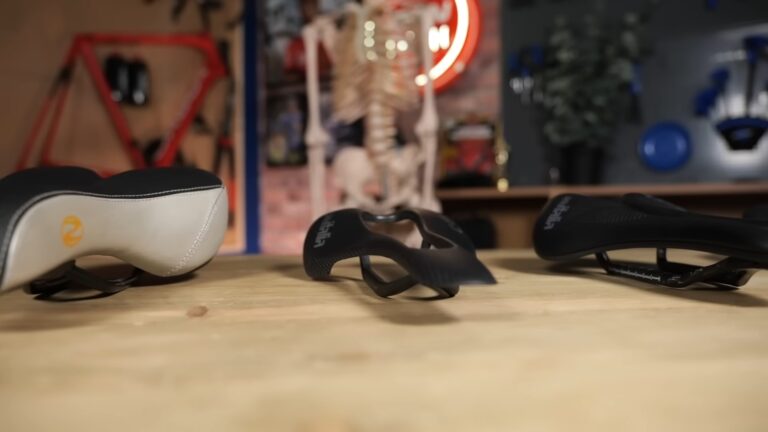Bike seats are reportedly one of the main common discomfort physical problems caused by bike riders. Almost 50 percent of them leave cycling due to this reason.
There are several technical features that create the overall experience of sitting on a bicycle seat. Some of these features trap pressure in painful areas, and others work to relieve that pressure. Unfortunately for cyclists, the most important feature is one that creates pain.
Why Are Bike Seats So Uncomfortable? There are so many reasons and no one can figure out one that is causing the problem. From riding posture to the padding and size of the saddle, all play a part in that. We have brought you a list of reasons that cause this discomfort to you and how can you make it better so that you can ride along and fast without any pain.
A Saddle, Not a Seat
The main problem with amateur riders is that they treat the bike saddle, like a seat. Although in the cycling world, both of them may mean similar in technical terms it’s different. A seat is a space where you sit with full body weight focused on the seat. In the case of the saddle, this shouldn’t be done.
The rider must apply most of the weight on the paddles and handlebar while often moving up and down from the saddle. This helps not only in the bicycling speed and power but also you will feel less pain and discomfort due to the saddle. Saddle instead of seat has huge logic behind it as if the seat carries all the weight then the cycle stability and your endurance will effect plus you will get more backache due to it. So saddles are designed with keeping this point in mind that the bike must carry the weight on the paddle and handle most of the time.
Why Are Bike Seats So Small and Skinny?
While shopping for a suitable bike for yourself you may realize that all the bike saddles are small, skinny, and hard. Does no one ever think about designing a cushioned and comfortable one?
Obviously, they did! But with all the calculations and effort in making the bike’s seat, comfortable none of the attempts turned out successful. As it is said, “The narrower, the harder the seat the better the ride”. Because saddles are supposed to support your sit bones. If there is a seat cushioned instead then they will sink and won’t be able to give good support so you can paddle effectively.
Coming to the skinny design with a curved shape and a narrow front, you get good leg space and there is less friction in between. A pointed saddle with the correct angle gives extra support while climbing on inclines. The harder surface distributes the body weight uniformly throughout so no one point gets numb or bruised after the ride.
Not One Size Fits All
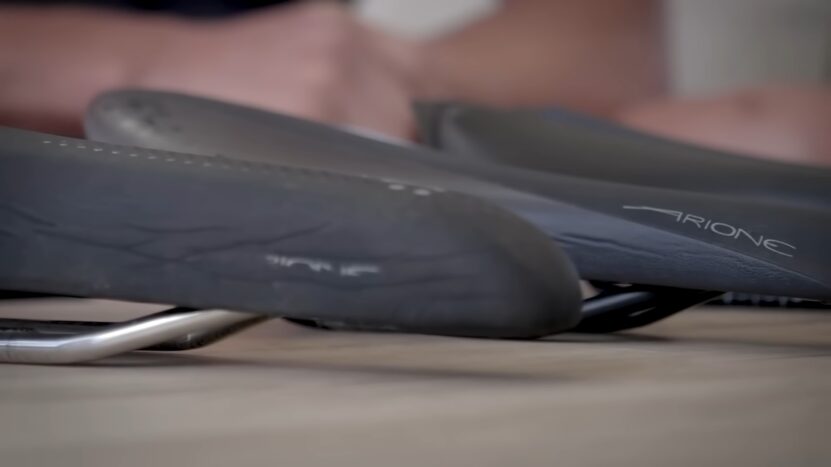
Like clothes or fingerprints, everyone has a different size and spacing between their sits bones. So finding a universal saddle that fits all is just a myth. Sits bones are two bones in your butt and most of your weight is carried by them.
If you get a narrower saddle or two wider than that distance then you probably won’t have good support and weight distribution. Another factor is the shape of the saddle that suits you. The design and shape depend on factors like butt size or male and female structure.
Almost all bike shops have measurement tools and you must get the right size of the saddle for your bike so that you can paddle perfectly and your thighs don’t rub against each other.
You must try a few sizes and designs before buying so you get the best-suited one. Also while you choose the saddle do consider your riding position too so that the design and size can support your position and you don’t get a backache or sore butt later.
Proper Form and Endurance
Discomfort or pain in the legs and butts is also caused by body endurance and fitness level. Mostly new riders experience pain in the back or legs due to their low core endurance and stamina.
If you notice that whatever the workout you may feel muscle soreness at the start but if it doesn’t improve with time then there might be a problem with the saddle, bike, or your riding posture. To avoid problems you must build up endurance and train the muscle. Here is how you can do it:
1. Good fit
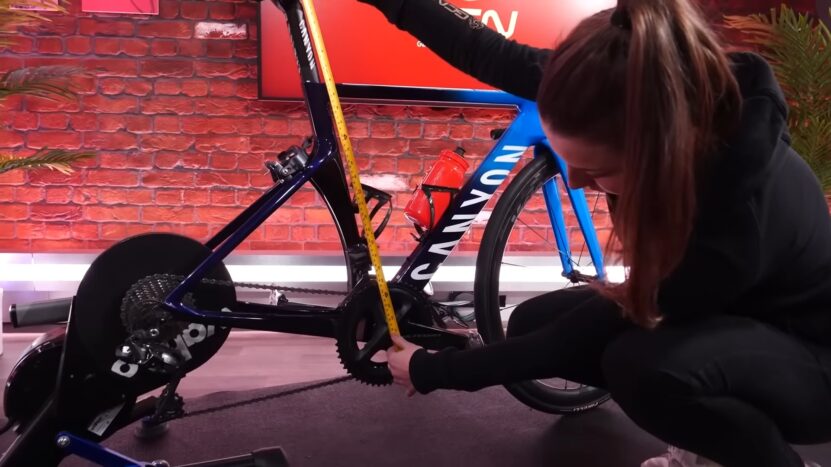
Good fitting of the bike like proper height, saddle size, and design is important as due to friction or too much pressure on sits bone while paddling may be the cause of pain and discomfort
2. Regular cycling
Don’t stop when you feel pain in your legs. Riding regularly and adding more and more miles gradually build up your stamina and endurance and this is greater with climbing miles and fixed-gear bike miles added. This will make your core stronger and your muscles tougher
3. Train leg muscles
Another way of building good form is to cycle with the legs bearing the weight most of the time instead of sitting ideally. This is strength training and will strengthen your leg and thigh muscles making them fit to ride the tougher terrains without feeling fatigued.
4. Harder saddle
For beginners getting a padded saddle may reduce the stability and with rocking from side to side while paddling there would be friction in the thighs and pain in the butts. So get a lightly padded or no-padded version when you start cycling.
5. Standing position
While cycling if the sit bones are bearing the pressure most of the time then the blood flow will decrease causing the legs to tire and muscle injury. So while you cycle every 5-10 minutes try to get into a standing position for a minute or half for getting normal blood flow and relieving the pressure on the sits bones.
Different Seats for Different Riding
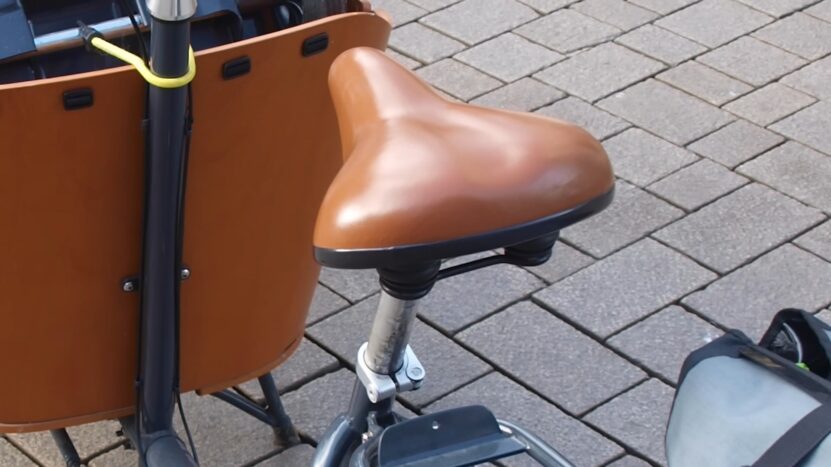
Saddle size and design depend upon the type of riding and the position. For fast-speed riders like racers or mountain climbing a bike saddle with a skinnier or aerodynamic sort of design will be best. As for general cycling, a bit curvy or wider saddle will do the task.
This is due to the comfort of positioning. Because in racing or climbing a rider is tilted forward so a narrow front is good while in the usual cycling sitting position is upright so a curve in design will give good support to the butts and sits bones. Here are some common bike seat or saddle types according to the riding position and type.
1. Race saddle
These kinds of saddles are super skinnier and hard with tilted low and pointed so that the weight of the rider is carried mostly by the legs and handlebar and there is good leg space and less wind resistance.
2. Wide shape saddles
For riders who cycle slowly and sit in a position where most of the weight is carried by the saddle, a wider saddle is designed to give good support and reduce discomfort while cycling. This kind of saddle is padded and has springs under the seat so that it can handle the weight and ensure maximum comfort.
3. Gel cover saddles
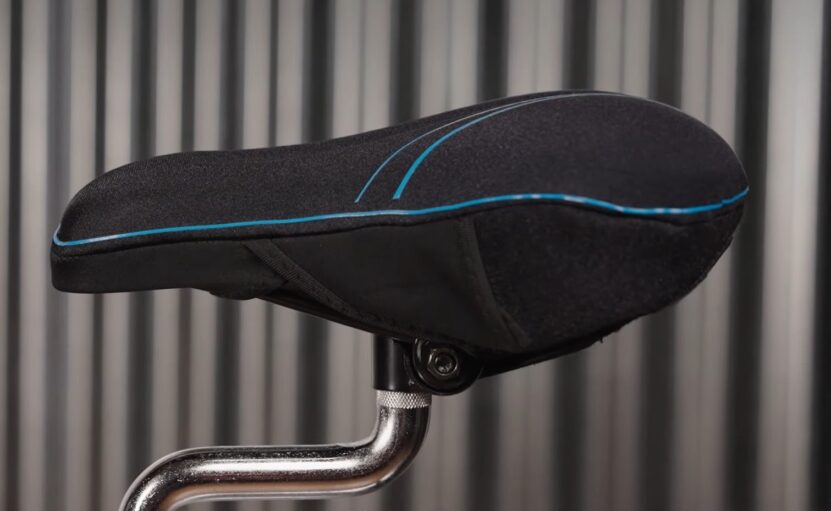
Gel covers are a great innovation in saddle covers. The gel molds itself according to the rider’s body contour and this helps in shock absorbance, comfort, and less chaffing and numbness in butts and groin area. It provides good support to the sit bones due to wider design and even weight distribution.
4. Cutaway saddles
These are a special type of saddles that are designed to reduce discomfort in all riding positions by having holes of cutouts in the saddle top so the pressure points are removed and no numbness and pain are thereafter the rides.
5. Gender-centric saddles
Gender-specific saddles are designed with the anatomy of the human body in mind. Male saddles are narrow and skinnier to avoid pain in the crotch area while female saddles are wider to support sits bone and have more space than in males.
Different Seats for Different Terrain
Choosing the perfect saddle is a tough task and while you do so one important point to consider is the type of terrain you are going to ride on. This plays an important part as if you are on rough or bouncy terrain then enough back support or shock absorbance must be there or else you will find yourself with severe back problems afterward.
1. Mountain riding saddles
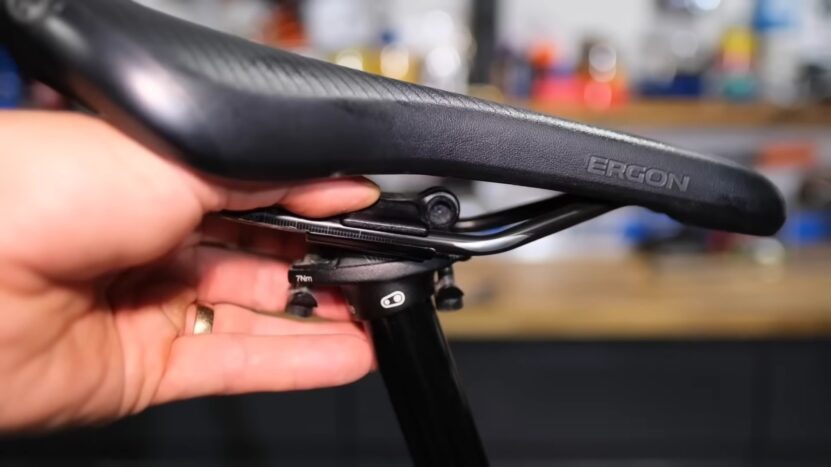
For mountain bikes, the saddles are designed to be narrow with an ample amount of padding to dampen any jerks or shocks during the ride on rough terrain. The nose of the saddle can slope down with the rear movable so any kinds of blows and jolts are absorbed and the rider can move forward.
2. Saddles for cruiser
For regular rides and peaceful long rides in the cruiser, these saddles are designed with good cushioning and support on both ends. Due to the handlebar design of cruiser bikes, most of the weight is supported by the saddle and this one is made accordingly to support the weight with proper comfort
3. Suspension saddles
As the name says these narrow and skinny saddles have a suspension spring system under them that is impressive for uneven and bouncy terrains. The suspensions absorb all the jerks and shocks keeping your back and butts safe from any injury.
4. Extra comfort saddles for rough terrains
Another brilliant saddle design for rough terrains is the comfort saddles that are skinny and narrow but have proper packing padding inside the cover. The shock absorbance of these saddles is brilliant and they are fit for all kinds of bikes and deliver a high-quality comfortable ride on all trails.
Importance of Proper Fit, Form, and Height
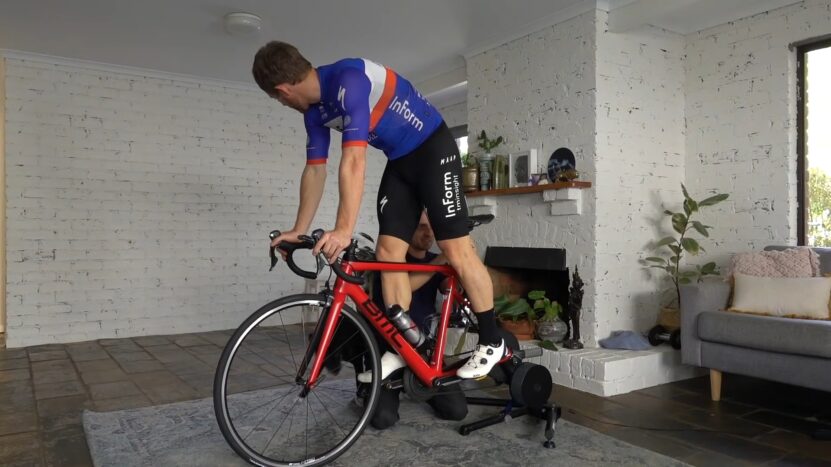
While the size and design of the saddle hold prime importance. Some other factors like the handlebar position, the distance between the handlebar and the saddle, and the correct incline also play a vital role in your riding comfort and safety. These are some of the key points you must take care of before buying the right seat or saddle for your bike:
1. Correct angle
The tilt of the saddle is a crucial factor in relieving the pressure points of your legs and butts and shifting the weight from the saddle to the arms. A lower saddle nose is good for racers who paddle in an aggressive and lower position. This angle of the nose rather than completely horizontal is great for saving your lower region from getting numb.
2. Right height
Setting the saddle at the correct height is also an important factor. Too low can affect the paddling while too high may cause knee injury or pain. Subtract 10 cm from your inner leg height and set the saddle at that height from the center bracket for optimum results.
3. Proper handlebar position
Handlebar position is another main cause of soreness on your butts and legs due to the saddle. Position the handlebar properly by setting the height such that you don’t need to tilt forward or backward too much
Making Small Adjustments
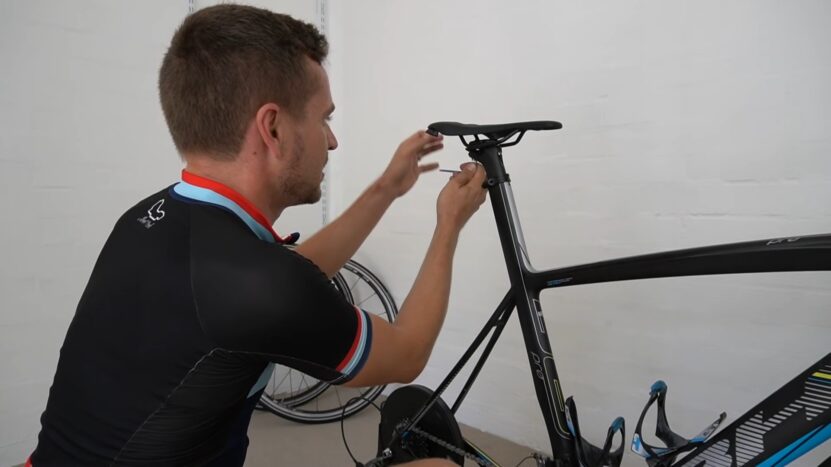
If you have taken the exact measurements and bought the best suitable saddle for you, but still you find some discomfort in riding then check out for these small adjustments. You will be amazed by the big effect of these small tips.
1. Vary the height
Maybe the height of the saddle is not set properly so vary it a bit lower or higher and check which one is more comforting.
2. Seat cover
Get a gel or cushioned seat cover that doesn’t affect the paddling and supports the sits bone efficiently
3. Handlebar
Adjust the height or angle of the handlebar to get the proper positioning for your riding posture.
4. Clothing
Wear shorts or clothes that give you comfortable space to paddle easily. Padded shorts or trousers are also good for extra comfort
5. Design
Maybe the bike you have bought is not the right size for you or the design of the saddle doesn’t match your terrain. So look out for that too.
Seat Covers – Do They Make a Difference?
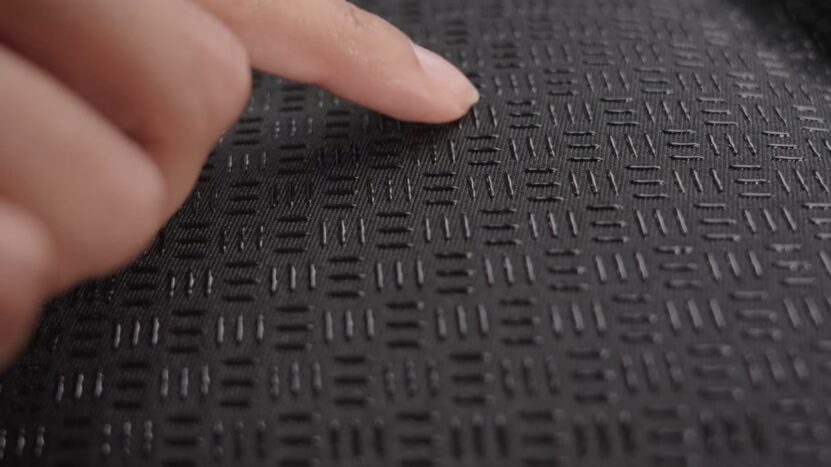
Yes, seat cover does affect the whole riding experience and comfort greatly. There are options for seat covers from leather and synthetic covers.
While synthetic is not long-lasting and the leather cover is hard until the break-in period but is immensely comfortable afterward. Leather ones are durable and don’t wear out easily while synthetic ones get rough plus they are less comfortable too.
Choose the type that best suits your saddle design and position.
What About Cushioned Seats?
The cushioning on the seat adds comfort and support to the seat cover in the form of either gel or foam. While foam cushioning is good the weight distribution might be uneven. Contrary to that the gel cushioning has uniform weight distribution and also gets molded according to the body shape to deliver maximum support.
Foam cushioning can get hot or cause friction while gel doesn’t. A drawback of gel cushioning is that under high pressure the gel can deform and get in an uneven section. This might cause discomfort instead of support so most riders prefer the foam cushioning over it.
For extra comfort, you can also add a saddle pad over the saddle to save the perineum area and sits bones from jerks and shocks on the rough terrains. Too much cushioning perhaps may feel comfortable and safe but in reality, it’s not. So while you choose the cushioning choose wisely as you need a saddle to sit on not sit in. The cushioning must not be too much so that the seat bones get to sink in rather than good support and posture.
Cushioned Bike Shorts
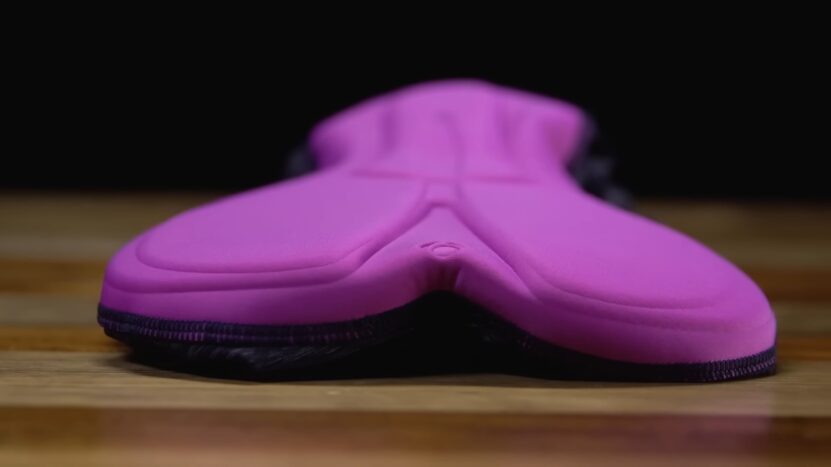
Clothing is also a very critical factor in bike riding. It is advisable to wear tight-fitting shorts with an ergonomic design and a bit of padding on the crotch area to save from friction and shock effects in the form of rashes or groin area pain. Padded shorts made from Lycra are famous for their comfort in design and saving from extra chaffing. They are saved from the road vibrations and also elevate the pressure points.
The short has a padded crotch area known as chamois which provides great comfort and safety during the ride. Although the padding gets compressed frequently you may need to replace it to ensure good support and comfort.
The Right Seat
Every bike rider is desperate to do anything to fix the problem with their bike seat and get a comfortable ride. Small adjustments in the height angle and cover can resolve the problem to a great extent. Have a trip to the nearest bike shop to get measurements for suitable bike size, saddle size, and design, cushioning according to the terrain and riding posture.
So plan wisely before so that you don’t have to regret it later. With these minor adjustments, your bigger problems will be solved and you can have the most suitable bike seat and don’t have to ever wonder why bike seats are so uncomfortable.

